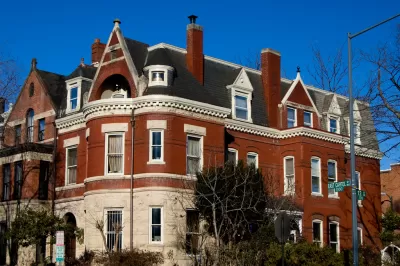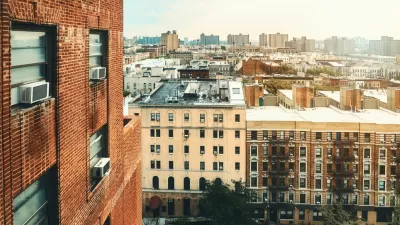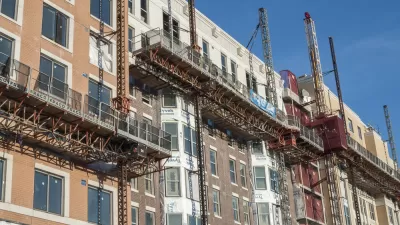In Washington D.C., ZIP code 20003 is split into two distinct areas: fiercely preserved Capitol Hill and the construction-heavy Capitol Riverfront. But where are rents skyrocketing, and what factors go into that equation?

"Not long ago," Payton Chung writes, "shiny new high-rise apartments around Navy Yard rented for more than the old rowhouses on the Hill. Now that many shiny high-rises have been built, they've become the cheaper option despite their 'luxury amenities.'"
As thousands of new residents take up occupancy in the "instant neighborhood" adjacent to the Anacostia, construction continues apace. In a phenomenon we've seen recently in cities like Seattle and Portland, abundant supply may really be keeping rents down for the time being.
The story is different in Capitol Hill, where the neighborhood's physical character is zealously guarded. "By contrast, people who want to move to the Hill, or even just move to a different apartment on the Hill, must compete for just a few empty apartments. As a result, prices are bid up."
But the widespread construction of tony "showplaces" in the historic shells of Capitol Hill houses attests to a different sort of change. "Even as the 'neighborhood character' of historic rowhouses has stood still, the neighborhood's population and social character have been transformed as ever-higher housing prices exclude all but the wealthy."
While the case of ZIP code 20003 may give hope to supply-side housing advocates, Chung also discusses why adding plentiful new units may stabilize prices, but won't necessarily lower them. Without the addition of housing supply throughout the city, this neighborhood-level effect may be very temporary.
FULL STORY: A tale of two 20003s: high rises or high rents

Alabama: Trump Terminates Settlements for Black Communities Harmed By Raw Sewage
Trump deemed the landmark civil rights agreement “illegal DEI and environmental justice policy.”

Planetizen Federal Action Tracker
A weekly monitor of how Trump’s orders and actions are impacting planners and planning in America.

Why Should We Subsidize Public Transportation?
Many public transit agencies face financial stress due to rising costs, declining fare revenue, and declining subsidies. Transit advocates must provide a strong business case for increasing public transit funding.

Understanding Road Diets
An explainer from Momentum highlights the advantages of reducing vehicle lanes in favor of more bike, transit, and pedestrian infrastructure.

New California Law Regulates Warehouse Pollution
A new law tightens building and emissions regulations for large distribution warehouses to mitigate air pollution and traffic in surrounding communities.

Phoenix Announces Opening Date for Light Rail Extension
The South Central extension will connect South Phoenix to downtown and other major hubs starting on June 7.
Urban Design for Planners 1: Software Tools
This six-course series explores essential urban design concepts using open source software and equips planners with the tools they need to participate fully in the urban design process.
Planning for Universal Design
Learn the tools for implementing Universal Design in planning regulations.
Caltrans
Smith Gee Studio
Institute for Housing and Urban Development Studies (IHS)
City of Grandview
Harvard GSD Executive Education
Toledo-Lucas County Plan Commissions
Salt Lake City
NYU Wagner Graduate School of Public Service





























